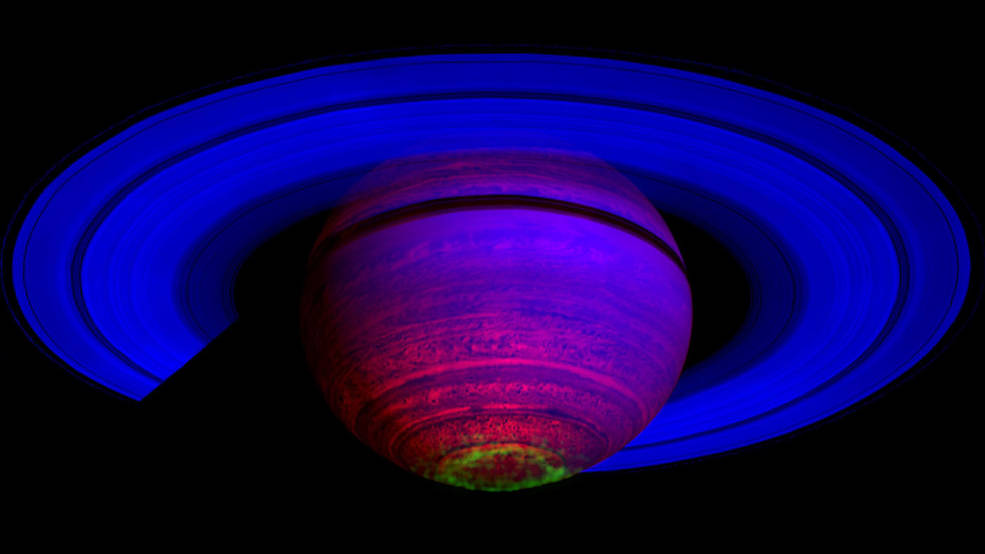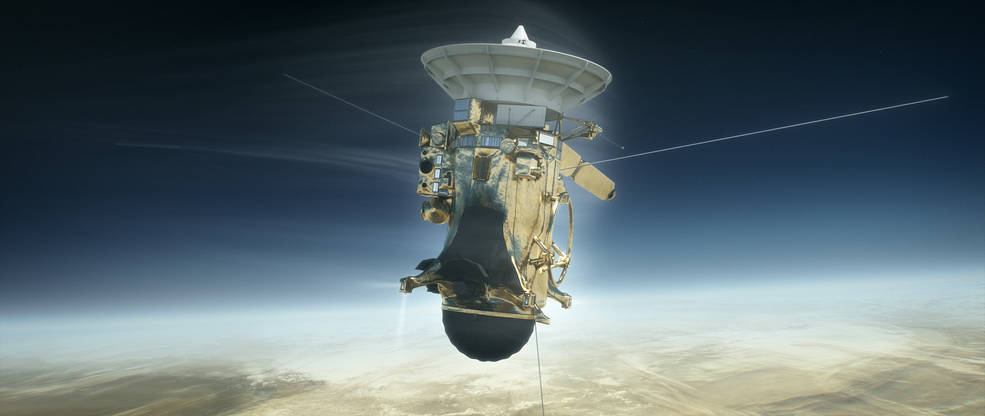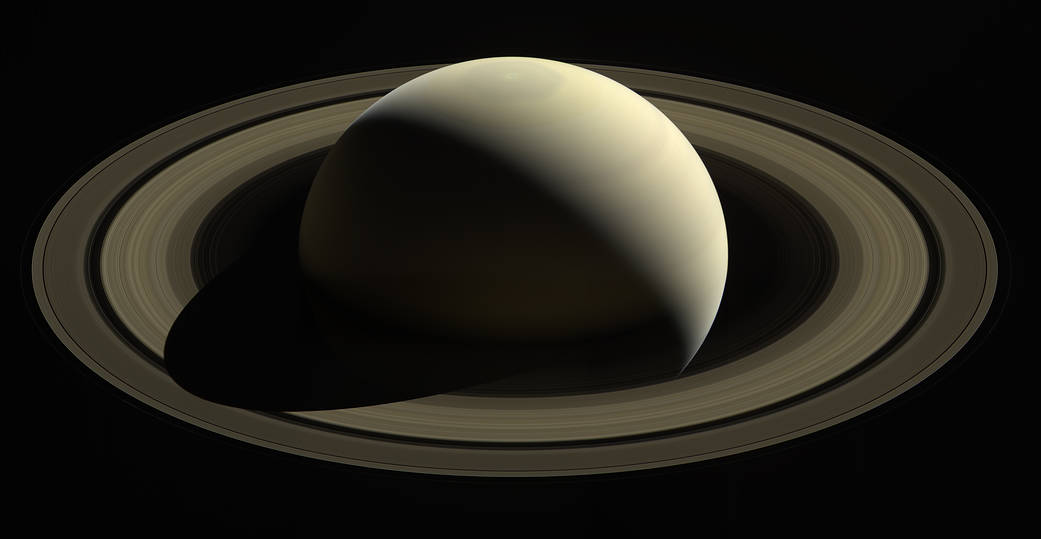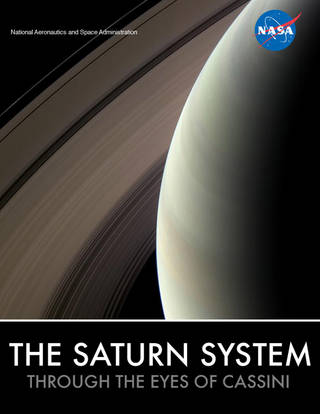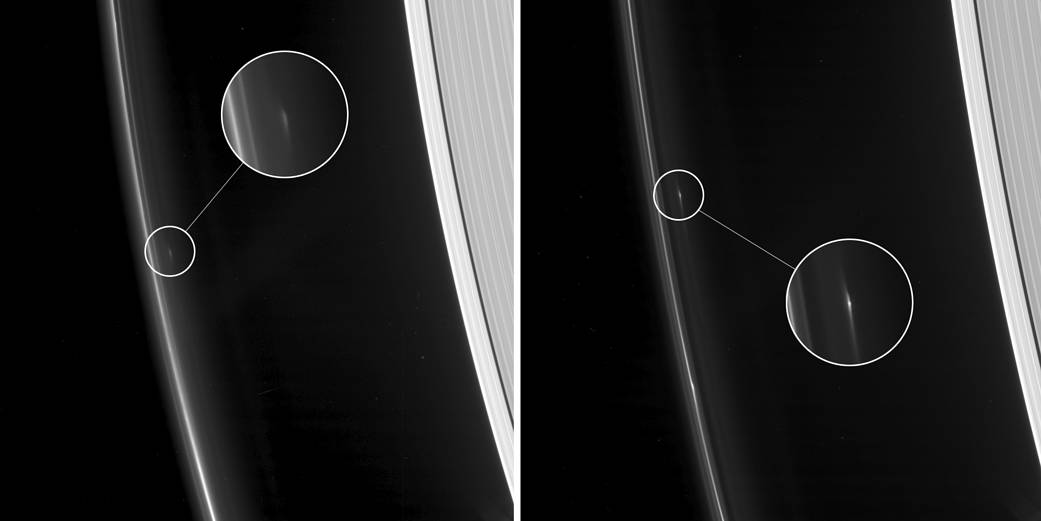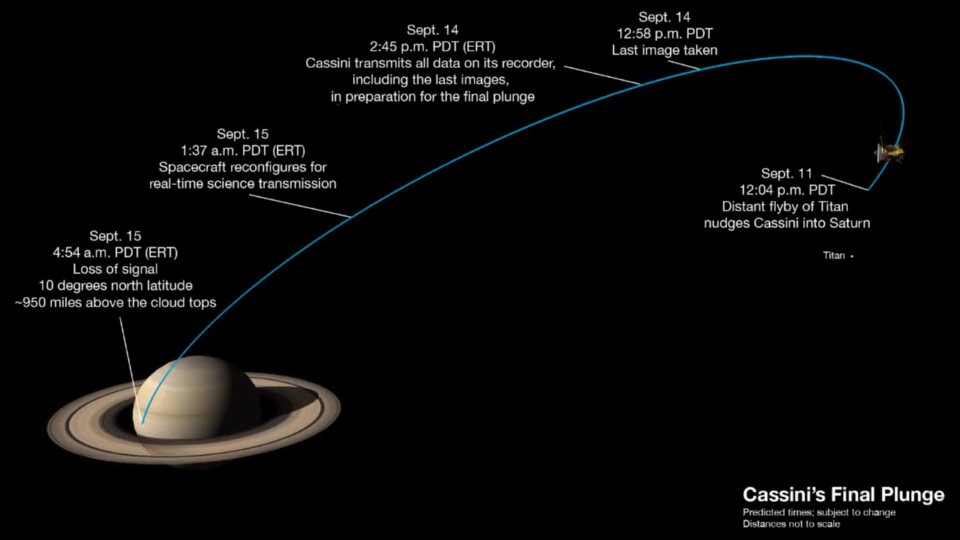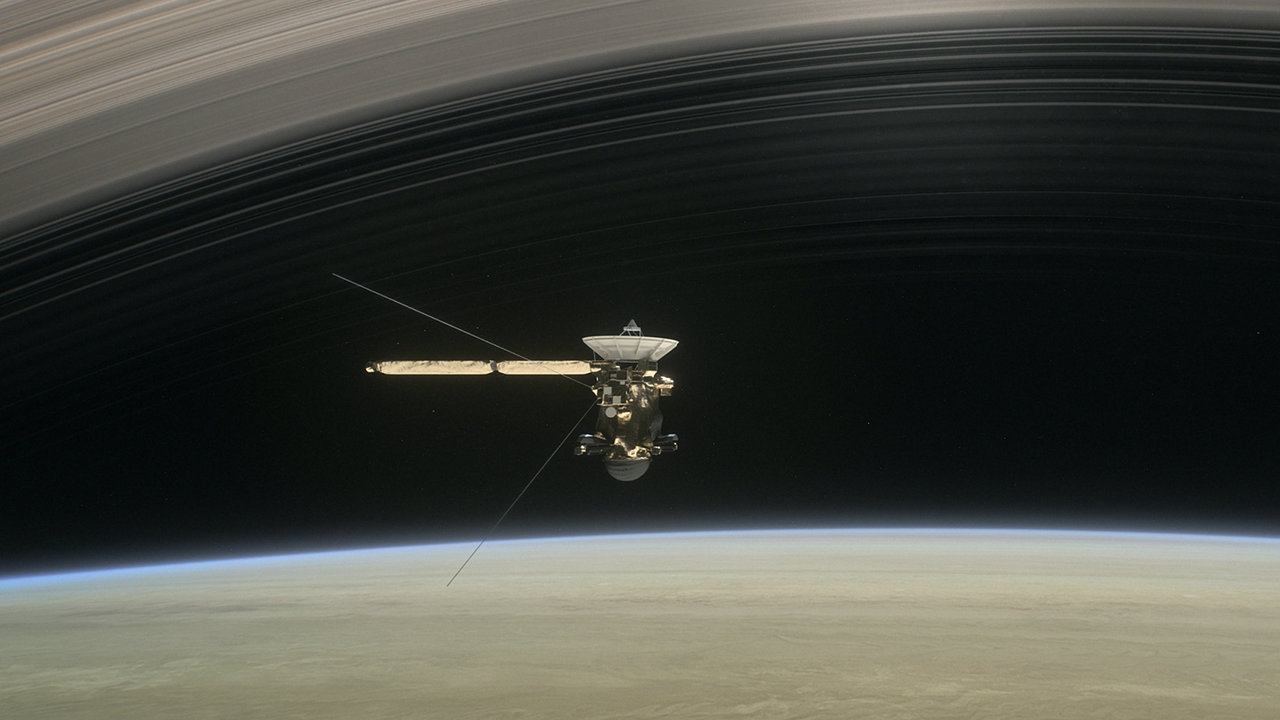土星探査機カッシーニからの観測データを分析することで、土星の大気の謎を解明することができるとしています。
観測結果から、オーロラにより土星大気上層部が過熱されていることがわかったということです。
Data From NASA’s Cassini May Explain Saturn’s Atmospheric Mystery
NASAのオリジナル記事:Data From NASA’s Cassini May Explain Saturn’s Atmospheric Mystery
Credits: NASA/JPL/ASI/University of Arizona/University of Leicester
The upper layers in the atmospheres of gas giants — Saturn, Jupiter, Uranus and Neptune — are hot, just like Earth’s. But unlike Earth, the Sun is too far from these outer planets to account for the high temperatures. Their heat source has been one of the great mysteries of planetary science.
土星、木星、天王星、海王星といった巨大ガス惑星の大気上層部の温度は、地球と同じように高温になっています。しかし地球とは異なり、これらの惑星は太陽から遠すぎて高温になる理由を説明できません。これらの大気上層部が高温となるための熱源は何なのか、惑星科学の大きな謎の1つです。
New analysis of data from NASA’s Cassini spacecraft finds a viable explanation for what’s keeping the upper layers of Saturn, and possibly the other gas giants, so hot: auroras at the planet’s north and south poles. Electric currents, triggered by interactions between solar winds and charged particles from Saturn’s moons, spark the auroras and heat the upper atmosphere. (As with Earth’s northern lights, studying auroras tells scientists what’s going on in the planet’s atmosphere.)
NASAの土星探査機カッシーニからのデータの新らたな解析により、土星およびおそらく他の巨大ガス惑星の大気上層部を非常に高温に維持しているものについて目に見える形で説明がつきました:それが土星の北極と南極のオーロラです。太陽風と土星の衛星からの荷電粒子による相互作用により引き起こされる電流がオーロラをスパークさせ、上層大気を加熱しているのです。 (地球のオーロラと同様に、惑星の大気で何が起こっているかがオーロラの研究からわかるのです。)
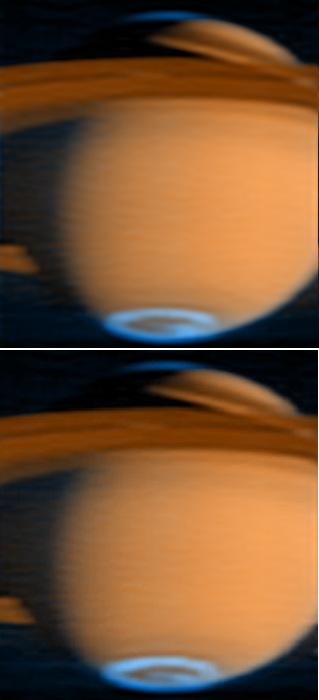
Credits: NASA/JPL/University of Colorado
The work, published April 6 in Nature Astronomy, is the most complete mapping yet of both temperature and density of a gas giant’s upper atmosphere — a region that has, in general, been poorly understood.
冒頭の画像は、4月6日付の「Nature Astronomy」誌で公開されたもので、巨大ガス惑星である土星の大気上層部の温度と密度の両方を網羅した最も完全なマッピングです。
By building a complete picture of how heat circulates in the atmosphere, scientists are better able to understand how auroral electric currents heat the upper layers of Saturn’s atmosphere and drive winds. The global wind system can distribute this energy, which is initially deposited near the poles toward the equatorial regions, heating them to twice the temperatures expected from the Sun’s heating alone.
大気中の熱の循環の全体像を作ってみることで、オーロラによる電流が土星の大気上層部を加熱して、風を引き起こしていることがよりよく理解できます。土星全体をめぐる大気の流れが、このエネルギーを分配し、最初の極の近くの領域から赤道領域に向かって遷移し、太陽光による加熱だけの場合に予想される温度の2倍に加熱されるのです。
“The results are vital to our general understanding of planetary upper atmospheres and are an important part of Cassini’s legacy,” said author Tommi Koskinen, a member of Cassini’s Ultraviolet Imaging Spectograph (UVIS) team. “They help address the question of why the uppermost part of the atmosphere is so hot while the rest of the atmosphere — due to the large distance from the Sun — is cold.”
「この結果は、惑星の高層大気の一般的な理解に不可欠なものであり、カッシーニの重要な遺産の一つです」と、カッシーニの紫外線画像分光器(UVIS)チームのメンバーであるトミーコスキネンは言います。 「この分析結果は、大気の最上部が非常に高温であり、残りの大気部分が太陽からの距離が大きいため冷たいのかという問題の解答に役立ちます。」
Managed by NASA’s Jet Propulsion Laboratory in Southern California, Cassini was an orbiter that observed Saturn for more than 13 years before exhausting its fuel supply. The mission plunged it into the planet’s atmosphere in September 2017, in part to protect its moon Enceladus, which Cassini discovered might hold conditions suitable for life. But before its plunge, Cassini performed 22 ultra-close orbits of Saturn, a final tour called the Grand Finale.
It was during the Grand Finale that the key data was collected for the new temperature map of Saturn’s atmosphere. For six weeks, Cassini targeted several bright stars in the constellations of Orion and Canis Major as they passed behind Saturn. As the spacecraft observed the stars rise and set behind the giant planet, scientists analyzed how the starlight changed as it passed through the atmosphere.
Measuring the density of the atmosphere gave scientists the information they needed to find the temperatures. (Density decreases with altitude, and the rate of decrease depends on temperature.) They found that temperatures peak near the auroras, indicating that auroral electric currents heat the upper atmosphere.
And both density and temperature measurements together helped scientists figure out wind speeds. Understanding Saturn’s upper atmosphere, where planet meets space, is key to understanding space weather, and its impact on other planets in our solar system and exoplanets around other stars.
The Cassini-Huygens mission is a cooperative project of NASA, ESA (the European Space Agency) and the Italian Space Agency. JPL, a division of Caltech in Pasadena, manages the mission for NASA’s Science Mission Directorate in Washington. JPL designed, developed and assembled the Cassini orbiter.
More information about Cassini can be found here:https://solarsystem.nasa.gov/cassini
Gretchen McCartney
Jet Propulsion Laboratory, Pasadena, Calif.
818-393-6215
gretchen.p.mccartney@jpl.nasa.gov
Grey Hautaluoma / Alana Johnson
Headquarters, Washington
202-358-0668 / 202-358-1501
grey.hautaluoma-1@nasa.gov / alana.r.johnson@nasa.gov
